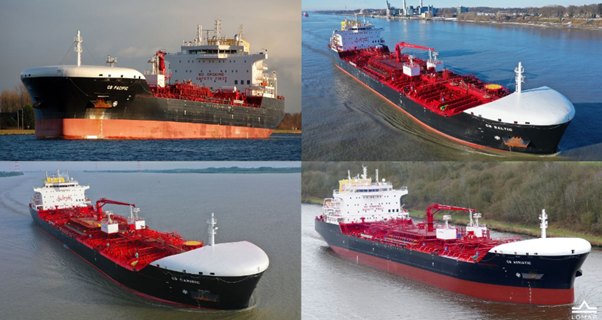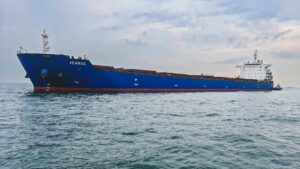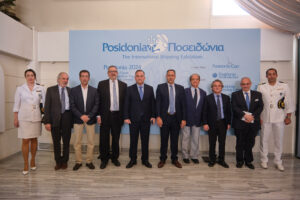Lomar Shipping’s corporate venture lab lomarlabs collaborates with climate-tech start-up Calcarea to develop technology that captures ship-board carbon dioxide and converts it to safe, durable ocean salts.
The process mimics the earth’s natural response to excess CO2 emissions from volcanoes and has the benefit that ships do not have to accumulate captured carbon and off-load it in port, London-based Lomar, a subsidiary of Libra Group, said.
Lomar explains its statement released on May 21 that “Calcarea’s system captures carbon dioxide from ship-board exhausts, and converts it into stable, benign ‘bicarbonate’ ions for release into the ocean.” As a result, the carbon is permanently and safely stored as slightly saltier water.
Founded at the California Institute of Technology (Caltech) and the University of Southern California (USC), Calcarea’s technology converts captured carbon into bicarbonate for release and allows ships to ‘sequester at sea’, avoiding the need to accumulate captured carbon on board and having to off-load it at port for transport and injection.
Stylianos Papageorgiou, managing director of lomarlabs, said: “For ship owners and operators to meet ambitious regulatory targets cost-effectively, we must see a surge in new solutions beyond the currently available technologies.
“This collaboration introduces a carbon capture system specifically designed for our industry, playing a crucial role in the challenging task of decarbonising maritime operations. It’s yet another example of our commitment to advancing innovative technology.”
Dr. Jess Adkins, founder and chief executive of Calcarea, noted: “We are thrilled to collaborate with lomarlabs to commercialise and deploy our on-board carbon capture system. Our technology offers lower energy demands, lower costs, and lower infrastructure requirements than comparable alternatives to cut emissions from shipping.
“But we need traction from ship owners and operators themselves to get our system out into the industry and in use. This collaboration will accelerate the testing and maritime engineering needed to get our system in use and reducing emissions.”



